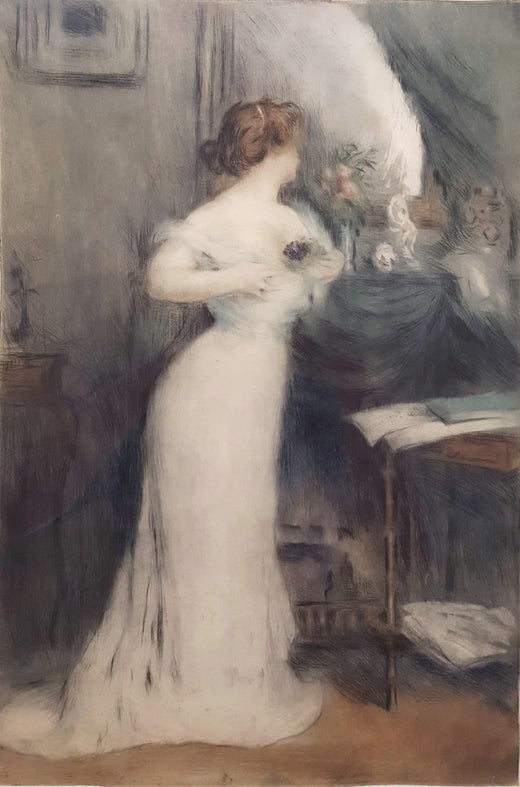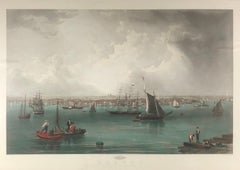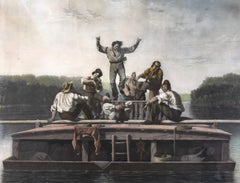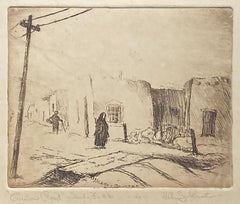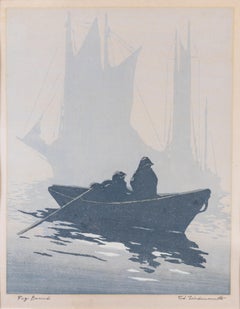Manuel RobbeIn Brittany1922
1922
About the Item
- Creator:Manuel Robbe (1872 - 1936, French)
- Creation Year:1922
- Dimensions:Height: 21 in (53.34 cm)Width: 26.75 in (67.95 cm)
- Medium:
- Movement & Style:
- Period:
- Condition:Please email or call if you have any questions or if you would like to see more detailed images.
- Gallery Location:Missouri, MO
- Reference Number:1stDibs: LU74732243713
Manuel Robbe
Manuel Robbe lived in Paris all his life, creating images that echoed the polished splendor of the Belle Epoque. He exhibited often at the Salons, first at the Société des Artistes Français (winning a gold medal at the Exposition Universelle of 1900) and after 1905 at the Société Nationale des Beaux-Arts. As the turn of the century, critic Gabriel Moury noted, Robbe's favorite subject was the "modern woman," her costumes, and activities and the visual elegance of her world. Absorbing the influence of Impressionism, particularly Renoir, Robbe applied a sensitive painterly touch to techniques that fit with the new paradigm of mass production. He designed and printed posters for corsets and bicycles, seeing, like Toulouse-Lautrec, the artistic potential of the new commercial era. Robbe also created illustrations for humorous magazines and made colored etchings of the works of contemporary artists. He was a favorite artist of the celebrated Parisian print publisher Edmond Sagot, who promoted his work. Robbe was a pioneer of the à la poupée process, enabling an artist to print multiple colors from a single plate. He invented his engraving technique known as “sugar-life,” using a mixture of sugar, India ink and gum Arabic on Zinc plates. The plates were heated, intricately worked and color was applied with brushes made of rags; Robbe then used his fingers to perfect the tones. Such technical mastery allowed Robbe to make each image unique, imbued with a lushness and immediacy befitting of the era in which he lived.
You May Also Like
Early 1900s Impressionist Figurative Prints
Aquatint
Manuel RobbeEarly 20th century aquatint landscape figure boat water trees lake print signed, c. 1900
1930s Impressionist Figurative Prints
Aquatint
Mid-20th Century Impressionist Landscape Prints
Aquatint
1930s Impressionist Figurative Prints
Aquatint
Early 20th Century Impressionist Landscape Prints
Aquatint
Early 20th Century American Impressionist Landscape Prints
Etching, Aquatint
Early 20th Century American Impressionist Landscape Prints
Etching, Aquatint
Late 20th Century Impressionist Landscape Prints
Aquatint
Mid-20th Century Impressionist Landscape Prints
Aquatint
Mid-19th Century Impressionist Landscape Prints
Laid Paper, Drypoint, Etching
More From This Seller
View All1850s Pre-Raphaelite Landscape Prints
Engraving, Aquatint
1840s Hudson River School Figurative Prints
Engraving
20th Century American Modern Landscape Prints
Etching
Mid-20th Century American Modern Figurative Prints
Color
20th Century American Modern Landscape Prints
Color, Lithograph
Mid-20th Century American Modern Figurative Prints
Color
